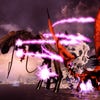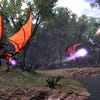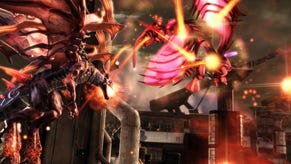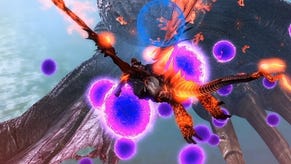Project Draco
Dragoon on.
A cherry-red dragon swoops low in a green-topped canyon, its wings skimming against still blue waters as formations of flying insects attack, all disposed of with a sweeping lock-on. Despite the familiarities, this isn't Panzer Dragoon - but the download-only Project Draco flies as close as is possible to Sega's much-loved on-rails series.
Take one look at Project Draco producer Yukio Futatsugi's CV and it's obvious where that particular influence has crept in from. When working at Sega's Team Andromeda in the Saturn era, Futasagi created Panzer Dragoon, helping oversee its sequel and the cherished but all-too-rare RPG spin-off Panzer Dragoon Saga.
But Project Draco's resemblance to Panzer Dragoon isn't born from one man's obsession with flying reptiles or a sign of a designer falling back on past success - it is, its creator claims, born from the possibilities and limitations thrown up when designing a shooting game that's exclusively for Kinect. "We tried to make a 3D shooter with Kinect, and following the logical steps of that we ended up with an on-rails shooter," admits Futasagi, a cheery, talkative man who's surprisingly forthcoming about the genesis of this game for his upstart outfit Grounding.
"When you try to make a shooter on Kinect, you have to think about movement, and I don't think there's a very good paradigm in terms of controlling movement back and forth and left and right. So we thought for Kinect let's make the action come to you, and the player has to deal with it by shifting their weight."
That explains one part of the puzzle - Project Draco is an on-rails shooter, swooping you into the screen on a pre-defined path with a small window of movement, shooting down patterns of enemies that dance extravagantly towards you.
Explaining how its aesthetic, a wholesale steal from the Panzer Dragoon series, made its way across is a different matter altogether - but the smiling Futasagi's got an answer to hand.
"I thought it's an on-rails shooter, that's great," he says, "But what are we going to be in the game?" An airplane was one early solution, leading to hazy dreams of a motion-controlled Afterburner clone, allowing you to recreate a jet fighter's gymnastics in the comfort of your own living room.
But that was deemed an awkward fit, the soft edges of motion control needing something a little less precise. "You think what do you control by shifting your weight," Futasagi says while hypnotically jiggling from side to side, "and you think about rideable animals."
"And then with animals," he says, his smile broadening, "you think dragon - yay!"
There are, of course, worse visual styles to revive, and the fantastical world conjured by Futasagi is as bewitching now as it was in 1995. Project Draco's world is seasoned with a quiet melancholy, a feeling rooted in its backstory, backed up by its wistful landscapes, and as powerful as ever on more powerful hardware.
Set in the far future ("it's sci-fi, not fantasy," the PR says, though she's drowned out by the soundtrack's pan pipes), Project Draco sees humans colonising a distant planet as they flee an unspecified apocalyptic event, and it's here that they chance across the dragons and harness them for transport.













